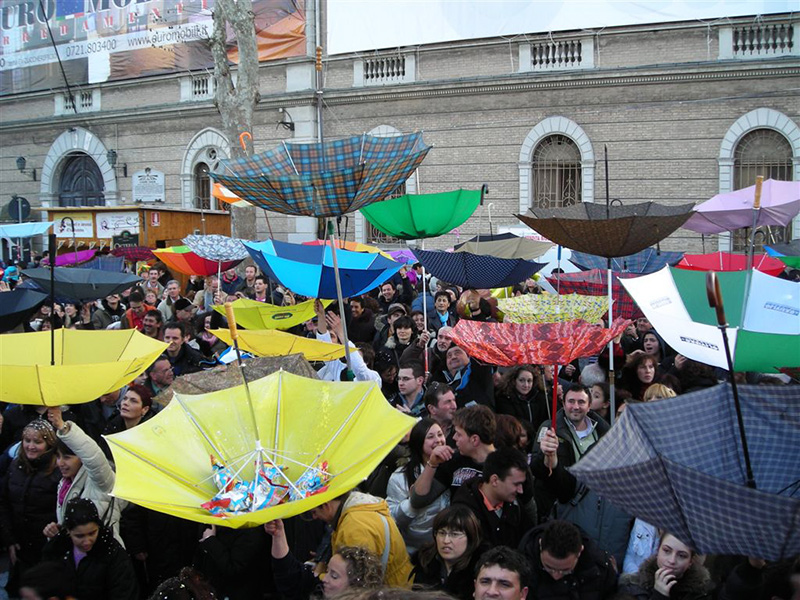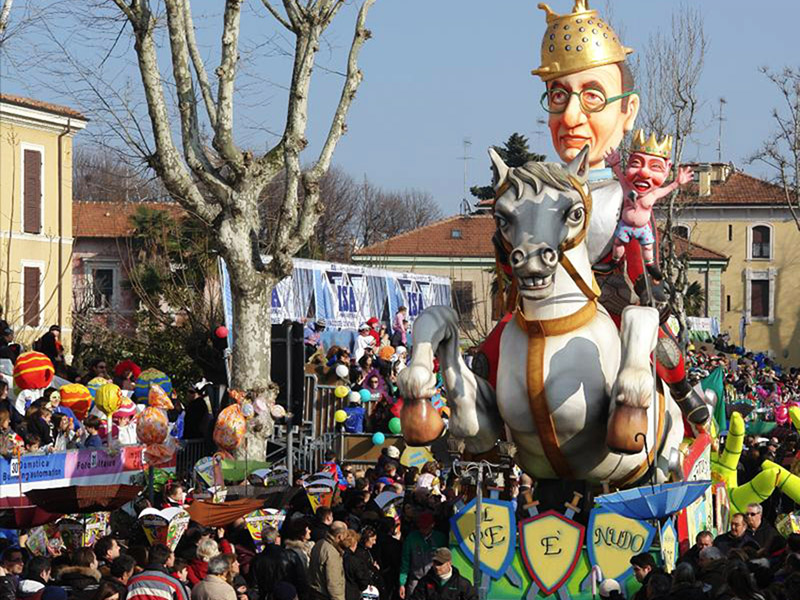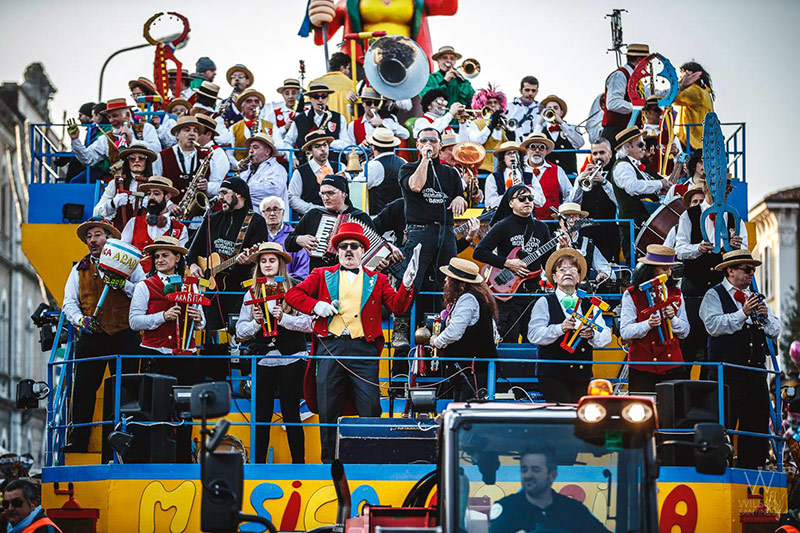SHARRYLAND


Where is

In Fano, Carnival is more than just a celebration; it is a cultural event with which the city is identified. This is because Fano boasts the oldest Carnival in Italy, documented by a manuscript dated 1347 that is still preserved. Since that time, Carnival has been punctually celebrated; an organizing committee with passion takes care of staging the event every year with the help of masters of the ancient art of papier-mâché who prepare the gigantic movable structures, always new in their subjects and themes. The result is a festival filled with cheerful and playful people who eagerly await the parade of floats. Every year is a surprise, every year is a joy, a kaleidoscope of shapes, sounds and colors that warm the hearts of everyone present. The anticipation, however, does not end with the sighting of the first floats. There are at least three characteristic elements of the Fano Carnival that are considered truly unmissable, and each has its own story to tell.
 An upside-down umbrella always comes in handy during the Getto
An upside-down umbrella always comes in handy during the GettoThe Getto
From carnival, you know, you come home covered in confetti, and that is one of the joys of this festival. In Fano, however, you happen to see people armed with umbrellas despite the fact that the day does not promise rain... They wouldn't want to shelter from the confetti, would they? Actually, no. If this is your first time attending the Fano Carnival you will soon realize that umbrellas are opened, yes, but upside down and used as basins. Other people break out cardboard cones and raise them upward. The crowd grows, huddles, the floats are parading, and the time has come: the Jetty begins. A dense rain falls on the crowd: chocolates, candies, sweets, and everyone tries to catch as many as they can, perhaps with the very umbrella-cats that catch this very sweet rain made up of almost two hundred quintals of dolcuimi. No doubt about it, the Throw makes Fano's one of the sweetest Carnivals ever! But this toss is not just an end in itself, as promised, it has a history of its own: the float participants toss the chocolates just as the farmers used to toss seeds on the fields, a gesture that is repeated every year as a wish for (very sweet) prosperity.
 Vulon of 2011
Vulon of 2011The Vulon
Prominent among the procession of floats is that of the "Vulòn," Fanesi's carnival icon, a mask of the bumptious braggart who ends his parade on Mardi Gras day in flames to carry away winter with him. The sound of the name brings back French echoes, and indeed, this grotesque figure was born in the Napoleonic era. Precisely during that period of French rule, there were characters who often trod the streets of the city: they were the auctioneers of edicts who, strutting and with a thundering voice, announced new laws and often new taxes to the citizens. The ritual phrase introducing new obligations and taxes contained the expression, "...nous voulons et nous ordonnons..." which translated into Italian means "...we want and order that..." Needless to say, the auctioneers were hated by the people who began to call them Vulon. Their contempt was such that the appearance of the mocking and desecrating mask and allegorical float was as natural a transition as it was inevitable. The Vulon, despite its ancient roots, is decidedly in step with the times, and each year it takes on the features of characters or situations that have stood out in the last period for their arrogance and arrogance.
 The Arabite Music band
The Arabite Music bandThe Arabite Music
The parade is accompanied by an Arabite Music folk band. Lined up on a float dedicated to them, these musicians display the most bizarre instruments such as cowbells, coffee pots, umbrellas and anything else improvised. The name, Musica Arabita is, again, related to the origin of this genre. We go back again to the 1800s, but this time toward the end, when the people, workers, peasants and sailors, tired of the social gap that existed between them and the noble class, decided to clamor for their existence and rights. What they did, however, was by no means violent; on the contrary, it began as a game, a tease, until it became a full-fledged folk music genre. Arabita in the local dialect means "angry" because, as we said, this new music was a reaction to the cultured music of the nobles' salons. Not violins and pianos, but tools of daily labor banged together to create a great din. In time the anger passed, the reaction became tradition, and the instruments changed, or rather, retained their whimsy, but became capable of producing more harmonious sounds, so that in 1929 the folk band that still cheers us with such energy today was officially born.
Enter the Map of Italy's Undiscovered Wonders and find treasures where you least expect it... Inspire, Recommend, Share...
Collections


